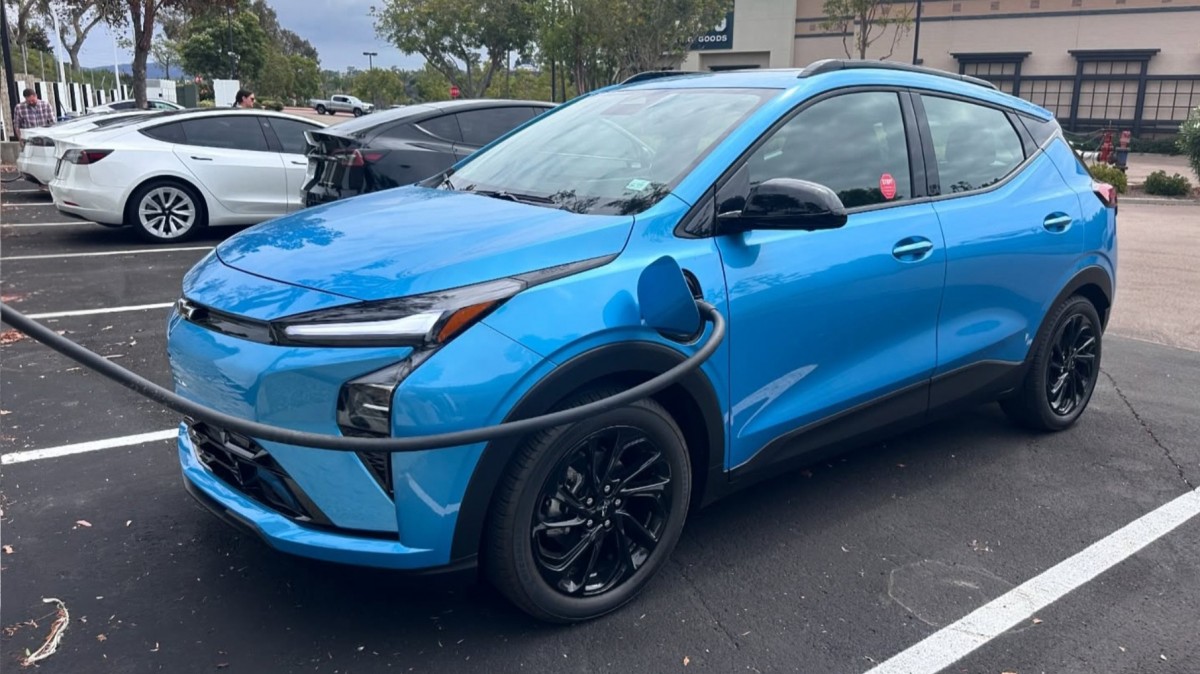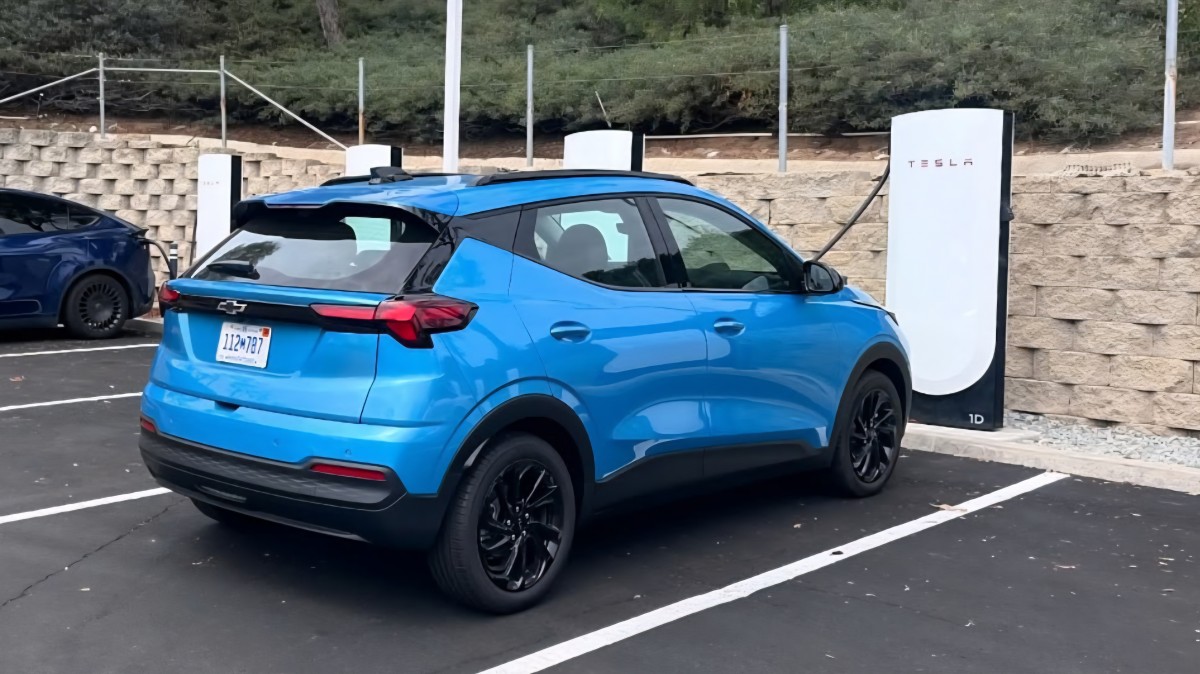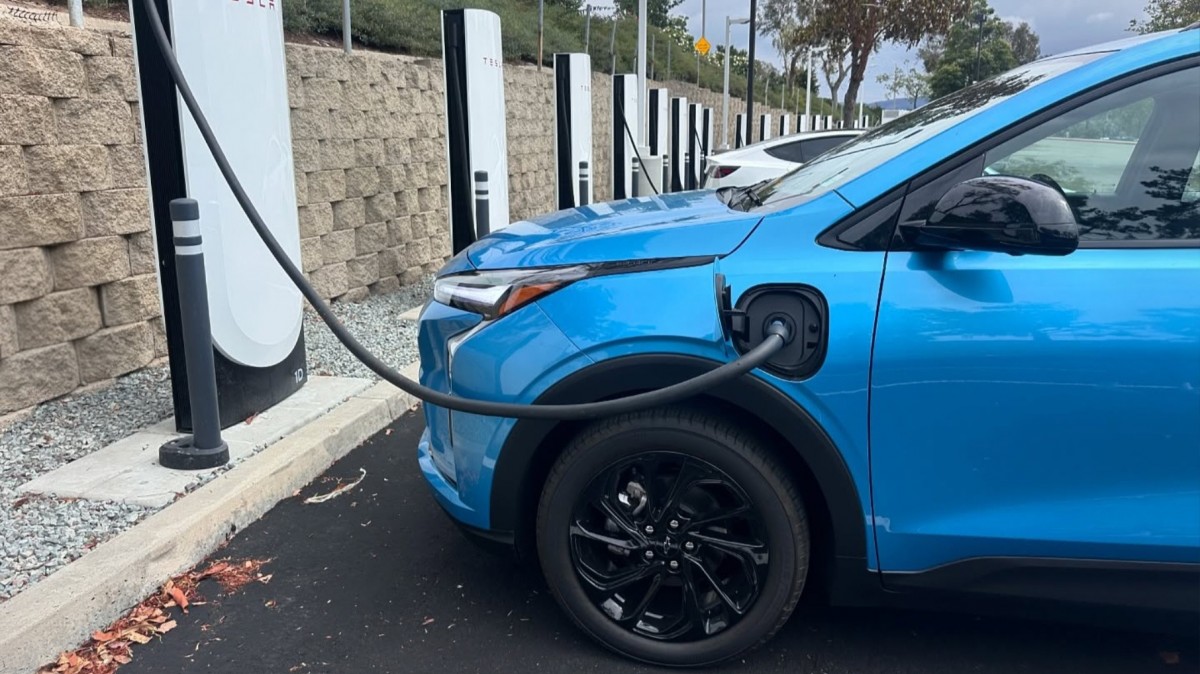All-new Chevy Bolt EV breaks cover at a Tesla charger
Automotive secrets are hard to keep. Sometimes, automakers go to great lengths to hide their future models, using wild camouflage and testing in remote locations. Other times, they just park an unreleased car at a public charger in Southern California and see who notices. General Motors seems to have chosen the second option for its upcoming Chevrolet Bolt EV.
An unconcealed, bright blue prototype of the new Bolt EV was spotted charging its battery. In a sign of the changing times for EVs, it was plugged into a Tesla Supercharger, using its built-in NACS port that will soon become standard for many manufacturers.
This public appearance, captured by an Instagram user, was almost certainly not an accident. In an era of viral marketing, this casual "leak" serves as a clever preview for one of the most anticipated affordable electric cars.
At first glance, many people might mistake the new model for the one it replaces. The overall shape and size are strikingly similar, suggesting this is an evolution, rather than a revolution. General Motors appears to be sticking with a winning formula, refining a design that was already popular with buyers.

The front end shares a family resemblance with other Chevrolet EVs, looking a bit like a smaller sibling to the Blazer EV. The rear taillights have been simplified, giving the car a clean and modern look that aligns with Chevy's current design language.
But look closer, and the differences start to appear. The biggest giveaway for car spotters is the side window profile. The old Bolt EV had a big dip in its window line just behind the side mirrors. The new model has a straight line that rises gently toward the back before making a sharp upward kink in the middle of the rear door, creating a more dynamic look from the outside. It's a subtle but definite change that confirms this is, indeed, the next-generation Bolt.

The biggest changes are hidden from view. We can't see the interior in the photos, but it is expected to feature modern tech like an 11-inch digital driver's display. The real story is actually under the floor of the new Chevrolet Bolt EV.
It will be built on an updated version of the previous car's front-wheel drive platform, with the biggest change being a completely new battery. General Motors is switching to a Lithium Iron Phosphate (LFP) battery pack due to its durability and lower cost.

By using LFP batteries with cells sourced from China, Chevrolet wants to cut production costs, and the goal is to offer the new Bolt with a starting price at or below $30,000. Crucially, the company wants to still make a profit on each one sold. This is a critical detail for both the company and for consumers looking for affordable electric cars.
Unfortunately, there is a catch. Due to the sourcing of its battery components, the new Bolt wasn't going to qualify for the federal tax credits that made its predecessor such an incredible bargain. Now, with the EV tax credit gone altogether, buyers will be looking at the sticker price without the promise of a large government discount. Even so, a brand new EV for under $30,000 should be a good option in a market where prices are usually much higher.
Reader comments
- Anonymous
- 8Yv
What's the range? Battery size determines the cost and directly affects the range. Also, it's charging at a Tesla charger, as GM has no charging infrastructure, another cost saving. And with Chevy's "low cost" reputation, ...




Facebook
Twitter
Instagram
RSS
Settings
Log in I forgot my password Sign up